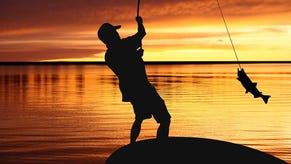Animal Crossing Sea Creature list: All sea creature prices, times and how to catch deep-sea creatures in New Horizons explained
Dive to the depths!
Sea creatures are the third type of creature you can collect in Animal Crossing: New Horizons.
Like fish and bugs, sea creatures can be donated to the Museum and have a page in the Critterpedia page to keep track of which ones you've already captured.
Unlike the rest of the wildlife that can all be safely caught from on the safety of your island, you need to swim out into the ocean to find the sea creatures.
The sea creatures you can find will also change as the seasons do, much like the fish that share their waters. The in-progress sea creatures list found on this page focuses on when each creature can be found in the northern hemisphere.
On this page:
Sea creatures in Animal Crossing: New Horizons explained
Sea creatures can be found in the waters surrounding your island in New Horizons and, like art, bugs, fish and fossils, are one of the collectables that you can donate to the Museum.
These creatures have their own page in the Critterpedia and can be sold to Nook's Cranny.
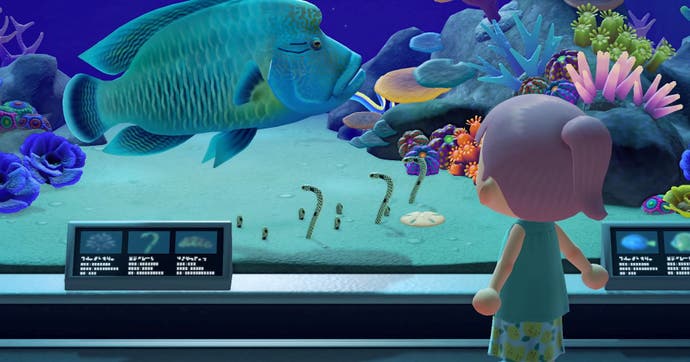
Pascal might also offer you the chance to exchange one of these creatures for a special DIY recipe.
Animal Crossing: New Horizons: Sea creatures and price list
Like fish and bugs, sea creatures in New Horizons are seasonal, which means that some will be unavailable during specific months of the year.
This means that it's impossible to find every single sea creature on one day. Instead, you need to ensure that you're exploring the depths of the sea throughout the year, even when it turns icy in the winter.
Below you'll find all the sea creatures in Animal Crossing: New Horizons, including which months they're available, in the order they appear in the Critterpedia.
It should be noted that the following are for the northern hemisphere. For the southern hemisphere, each set of dates will differ by six months.
Thank you to Chiiribi on reddit for the help with information!
| Animal Crossing Sea Creature | Months available | Times available | Price |
|---|---|---|---|
| Seaweed | October to July (Northern hemisphere) April to January (Southern hemisphere) | 24 hours | 600 |
| Sea Grapes | June to September (Northern hemisphere) December to March (Southern hemisphere) | 24 hours | 900 |
| Sea Cucumber | November to April (Northern hemisphere) May to October (Southern hemisphere) | 24 hours | 500 |
| Sea Pig | November to February (Northern hemisphere) May to August (Southern hemisphere) | 4pm to 9am | 10000 |
| Sea Star | All year | 24 hours | 500 |
| Sea Urchin | May to September (Northern hemisphere) November to March (Southern hemisphere) | 24 hours | 1700 |
| Slate Pencil Urchin | May to September (Northern hemisphere) November to March (Southern hemisphere) | 4pm to 9am | 2000 |
| Sea Anemone | All year | 24 hours | 500 |
| Moon Jellyfish | July to September (Northern hemisphere) January to March (Southern hemisphere) | 24 hours | 600 |
| Sea Slug | All year | 24 hours | 600 |
| Pearl Oyster | All year | 24 hours | 2800 |
| Mussel | June to December (Northern hemisphere) December to June (Southern hemisphere) | 24 hours | 1500 |
| Oyster | September to February (Northern hemisphere) March to August (Southern hemisphere) | 24 hours | 1100 |
| Scallop | All year | 24 hours | 1000 |
| Whelk | All year | 24 hours | 1000 |
| Turban Shell | March to May / September to December (Northern hemisphere) March to June / September to November (Southern hemisphere) | 24 hours | 1000 |
| Abalone | June to January (Northern hemisphere) / December to July (Southern hemisphere) | 4pm to 9am | 2000 |
| Gigas Giant Clam | May to September (Northern hemisphere) November to March (Southern hemisphere) | 24 hours | 15000 |
| Chambered Nautilus | March to June / September to November (Northern hemisphere) March to May / September to December (Southern hemisphere) | 4pm to 9am | 1800 |
| Octopus | All year | 24 hours | 1200 |
| Umbrella Octopus | March to May / September to November (Northern hemisphere) March to May / September to November (Southern hemisphere) | 24 hours | 6000 |
| Vampire Squid | May to August (Northern hemisphere) November to February (Southern hemisphere) | 4pm to 9am | 10000 |
| Firefly Squid | March to June (Northern hemisphere) September to December (Southern hemisphere) | 9pm to 4am | 1400 |
| Gazami Crab | June to November (Northern hemisphere) December to May (Southern hemisphere) | 24 hours | 2200 |
| Dungesness Crab | November to May (Northern hemisphere) May to November (Southern hemisphere) | 24 hours | 1900 |
| Snow Crab | November to April (Northern hemisphere) May to October (Southern hemisphere) | 24 hours | 6000 |
| Red King Crab | November to March (Northern hemisphere) May to September (Southern hemisphere) | 24 hours | 8000 |
| Acorn Barnacle | All year | 24 hours | 600 |
| Spider Crab | March to April (Northern hemisphere) September to October (Southern hemisphere) | 24 hours | 10000 |
| Tiger Prawn | June to September (Northern hemisphere) December to March (Southern hemisphere) | 4pm to 9am | 3000 |
| Sweet Shrimp | September to February (Northern hemisphere) March to August (Southern hemisphere) | 4pm to 9am | 1400 |
| Mantis Shrimp | All year | 4pm to 9am | 2500 |
| Spiny Lobster | October to December (Northern hemisphere) April to June (Southern hemisphere) | 9pm to 4am | 5000 |
| Lobster | April to June / December to January (Northern hemisphere) June to July / October to December (Southern hemisphere) | 24 hours | 4500 |
| Giant Isopod | July to October (Northern hemisphere) January to April (Southern hemisphere) | 9am to 4pm 9pm to 4am | 12000 |
| Horseshoe Crab | July to September (Northern hemisphere) January to March (Southern hemisphere) | 9pm to 4am | 2500 |
| Sea Pineapple | April to August (Northern hemisphere) October to February (Southern hemisphere) | 24 hours | 1500 |
| Spotted Garden Eel | May to October (Northern hemisphere) November to April (Southern hemisphere) | 4am to 9pm | 1100 |
| Flatworm | August to September (Northern hemisphere) February to March (Southern hemisphere) | 4pm to 9am | 700 |
| Venus' Flower Basket | October to February (Northern hemisphere) April to August (Southern hemisphere) | All day | 5000 |
The Animal Crossing 2.0 update and Happy Home Paradise is here! We can help you with the new additions - including where to find Brewster, Gyroids, new villagers, ordinances, new fences, storage shed, new hairstyles, Froggy Chair, group stretching and Kapp'n boat tours. Cooking is now unlockable, so you need to know how to make both flour and sugar, as well as how to grow carrots, potatoes and tomatoes. Meanwhile, if you're new to Animal Crossing, our New Horizons tips can help with the basics. From the off, there's fish and bugs to catch, flowers and fruit to grow with. One long term goal is building your Happy Home Academy score. Finally, you need tools such as the new ladder and vaulting pole to fully explore.
How to catch sea creatures in Animal Crossing: New Horizons explained
If you want to start collecting sea creatures in New Horizons, then you first need to purchase a wetsuit. Wearing one of these will allow you to venture out into the sea surrounding your island.
Once you're amongst the waves, swim around until you see a series of bubbles rising from the sea floor.
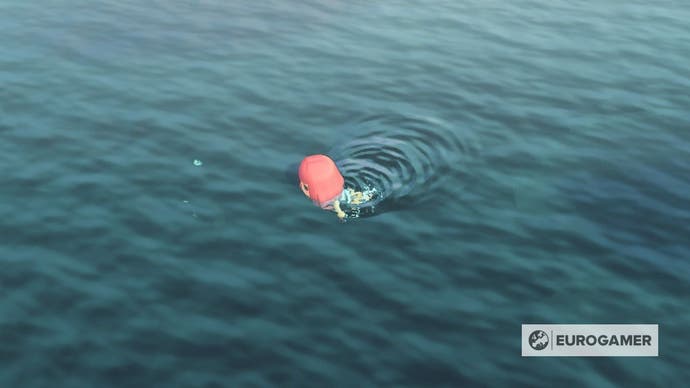
Head over to these bubbles and then begin to dive. As you do so, the camera angle will shift, giving you an overhead view of the sea, which will allow you to see a shadow sitting on the sea bed.
This shadow is the sea creature you're hunting you and, to catch it, you need to manoeuvre your avatar over to the creature.
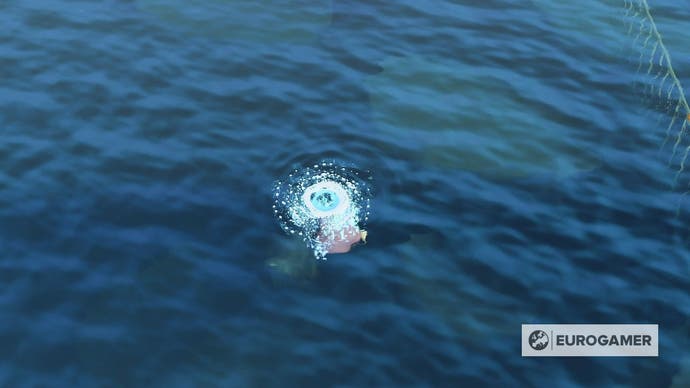
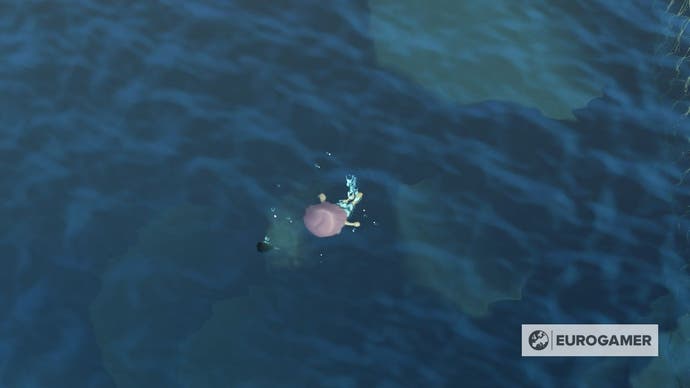
If you do this correctly, then you'll automatically swim back to the surface to display your catch, which can then be found in your inventory.
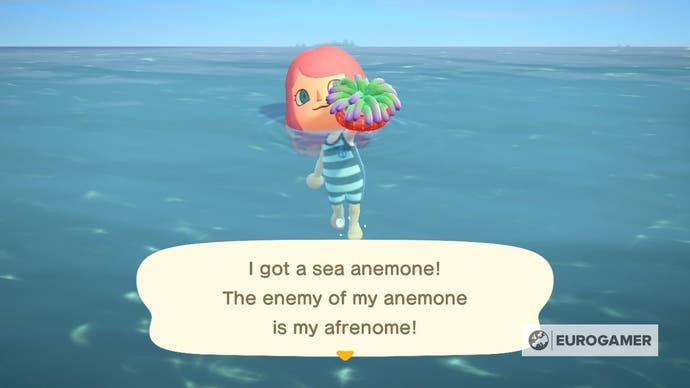
Good luck on finishing the sea creature Critterpedia page!







